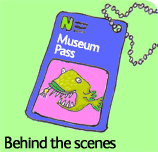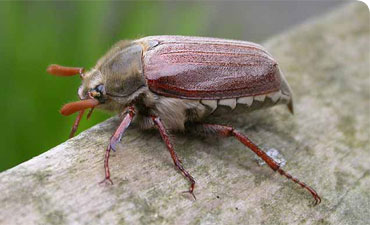Cockchafer or may-bug
Cockchafers, sometimes called may-bugs, are large beetles that appear in May or June. They are not harmful to humans but they can cause a pest problem by eating the roots of crops.
Cockchafer or may-bug
Melolontha melolontha
Coleoptera: family Scarabaeidae
Identification
The adult insect is about 2.5cm long. The head and thorax are blackish and covered with grey hairs while the rest of the body (the wing cases) is tan-coloured. The mature larva, or grub, lives in the soil, and it is dirty grey in colour with a C-shaped body. Its total length is about 4cm, and the brown-coloured head is armed with strong jaws.
Distribution
The cockchafer is found all over the British Isles in gardens, woods and fields but it is more abundant in the south. Its numbers are dwindling all over the country.
Behaviour
Cockchafers are strong fliers and often fly around houses, somewhat disconcertingly on summer evenings, crashing into lighted windows and entering rooms from time to time.
Life cycle
The adult beetle emerges from the pupa in October but remains underground and dormant until the following May. It is active for about three weeks while the entire period of development from egg to adult lasts three to four years.
Living with humans
By feeding on the roots of a wide range of plants, the grubs can cause considerable damage to pasture, crops and nursery trees.
Their natural enemies are rooks, starlings, plovers, seagulls and moles. The flocks of gulls that follow the plough eat large numbers of cockchafer grubs while rooks, often accused of destroying young corn, might only be after the grubs at the roots. The adult beetles are eaten by owls, nightjars and bats.
Summer chafer
Amphimallon solstitialis
Coleoptera; family Scarabaeidae
This somewhat smaller species is another of the Cockchafer beetles and is often called the summer chafer. The Latin name refers to its frequent appearance around the date of the summer solstice, so it usually appears later than the may-bug.
Toolbox

In World War II the Museum was used as a secret base to develop new gadgets for allied spies, including an exploding rat!

